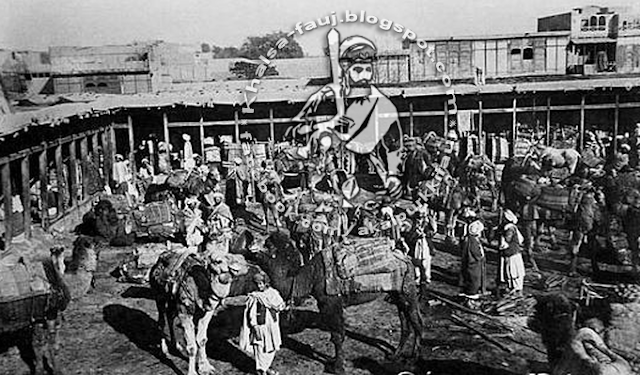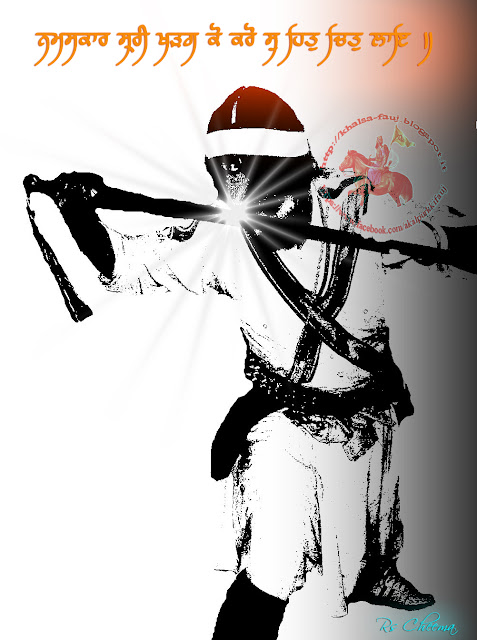Satguru Nanak Sahib in Asthrakhan ( Russia)
In 1912 Sirdar Karam Singh Historian, had confirmed the statement of Prof. Gurmukh Singh'S finding a Gurdwara Sahib in Asthrakhan. Prof. Gurmukh Singh made this statement in 1878 at Oriental College, Lahore. He was a prof. of Punjabi Language there.Professor Gurmukh Singh'S statement had been confirmed by " The Calcutta Review, 1858" . On its particlar page no. 251. the worthy editor of The Calcutta Review, states---"The Seikhs have a shrine in Asthrakhan, and another in some obscure place on the shore of Red Sea, which Khalsas view with the same veneration that the Christian of the middle ages viewed Jeruslem, and the Moslems of all the ages have viewed Macca and Medina---.". This leaves no doubt that the Gurdwara Sahib in Asthrakhan was historical like the Gurdwara Sahib in Aden ( on the shores of Red Sea)
The real sory goes like this. Japu vanshi of Multan went to russia in early part of sixteenth century. Both Satguru Nanak Sahib and Bhai Sahib Mardana Ji went to third Oddessey ( Udhasi) in the north of the world in 1516-17. They visited Asthrakhan and stayed at the house of Japu Vanshi, a trader from Sukkur, Sindh ( Ref. Varan Bhai Gurdas, Var 11, Pauri 14, where Bhai Sahib writes---"Bhagat Jo Bhagata Ohri Japu Vanshi Sev Kamave--". At Astrakhan almighty Satguru addressed the traders to do "Nek Kirat" (Fair trade) .Almighty Satguru spend some days with Japu- Vanshi and made him the Preacher of China, Korea and Japan etc. They left for Nanking and Shanghai (China), North Korea and Kobe ( Japan).In 1556 the Astrakhan was won by Russia. in 1556, the English traveller, A. Jenkinson went to Asthrakhan, who confirmed the Mangole trader, Iranian traders etc. Another traveller, S. Herberstein was of the different opinions. He ( S. Herberstein) Wrote"---the importance of Asthrakhan about 1520s, stating that ' Asthrakhan is a wealthy city, and the great emporium( Traders House) of the Tarters, which give its name to all surrounding country-----, being heirs of merchants, craftsmen, fishermen and farmers---"( Ref. PP No. 207 of " Islam in Russia"). In 1625 an Indian Serai was built in 1625, and an Indian Square was built by local govt. in 1649.There were traders in Moscow and Volga region of Russia even before 1580 ( Ref. " The Merchant of Moscovy 1580-1650) The russian census in 1556 confirms some Indian traders in the south of Russia. Please note that Asthrakhan is in the south region of Russia and Volga river. in 1469 a Russian traveller, Afanasij Nikitin, reached India. He was a trader too. From 1469, the Indo- Russian trade started ( Ref. " Indian Dispora in Central Asia and its Trade, 1550-1900").
Bibligraphy:-
(1)--=PP 61 of " Katak Ki Visakh", by Sirdar Karam Singh Historian, 1912, published by Lahore Book Shop, Lahore, 1932.
( 2 )---Varan Bhai Gurdas, Path te Prasang, by Prof. Brahmjagdish Singh, published by Waris Shah Foundation, Amritsar, 2009
The real sory goes like this. Japu vanshi of Multan went to russia in early part of sixteenth century. Both Satguru Nanak Sahib and Bhai Sahib Mardana Ji went to third Oddessey ( Udhasi) in the north of the world in 1516-17. They visited Asthrakhan and stayed at the house of Japu Vanshi, a trader from Sukkur, Sindh ( Ref. Varan Bhai Gurdas, Var 11, Pauri 14, where Bhai Sahib writes---"Bhagat Jo Bhagata Ohri Japu Vanshi Sev Kamave--". At Astrakhan almighty Satguru addressed the traders to do "Nek Kirat" (Fair trade) .Almighty Satguru spend some days with Japu- Vanshi and made him the Preacher of China, Korea and Japan etc. They left for Nanking and Shanghai (China), North Korea and Kobe ( Japan).In 1556 the Astrakhan was won by Russia. in 1556, the English traveller, A. Jenkinson went to Asthrakhan, who confirmed the Mangole trader, Iranian traders etc. Another traveller, S. Herberstein was of the different opinions. He ( S. Herberstein) Wrote"---the importance of Asthrakhan about 1520s, stating that ' Asthrakhan is a wealthy city, and the great emporium( Traders House) of the Tarters, which give its name to all surrounding country-----, being heirs of merchants, craftsmen, fishermen and farmers---"( Ref. PP No. 207 of " Islam in Russia"). In 1625 an Indian Serai was built in 1625, and an Indian Square was built by local govt. in 1649.There were traders in Moscow and Volga region of Russia even before 1580 ( Ref. " The Merchant of Moscovy 1580-1650) The russian census in 1556 confirms some Indian traders in the south of Russia. Please note that Asthrakhan is in the south region of Russia and Volga river. in 1469 a Russian traveller, Afanasij Nikitin, reached India. He was a trader too. From 1469, the Indo- Russian trade started ( Ref. " Indian Dispora in Central Asia and its Trade, 1550-1900").
Bibligraphy:-
(1)--=PP 61 of " Katak Ki Visakh", by Sirdar Karam Singh Historian, 1912, published by Lahore Book Shop, Lahore, 1932.
( 2 )---Varan Bhai Gurdas, Path te Prasang, by Prof. Brahmjagdish Singh, published by Waris Shah Foundation, Amritsar, 2009
Gurdwara Sahib at Calmai Market or Principal Squre in Asthrakhan ( Russia)
( by courtesy of Google Image).
The Calmai Market or Principal Square, in a sketch of 1669, (by Voyages of John Sturys) { Please See the Calmai Market at Serial No. 13 of this sketch}.
Permission of Russian Government in 17th century. "XVII Beka" means " 17th century",
PP 251 of " The Calcutta Review, 1858, whichconfirms a Sikh Shrine ( Gurdwara Sahib ) ( by courtesy of a Micro-Text of University of Toronto).

Permission of Russian Government in 17th century. "XVII Beka" means " 17th century",
PP 251 of " The Calcutta Review, 1858, whichconfirms a Sikh Shrine ( Gurdwara Sahib ) ( by courtesy of a Micro-Text of University of Toronto).




.jpg)
